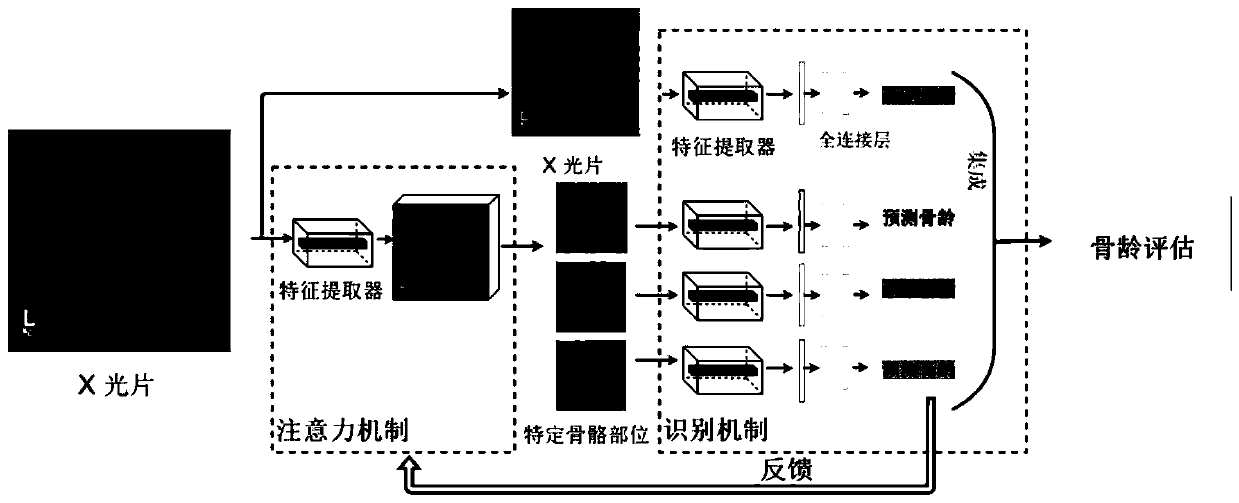Bone age evaluating method
A skeletal age and skeleton technology, applied in the field of skeletal age assessment, can solve the problems of limiting the generalization ability of the model, the model cannot be trained end-to-end, and affecting the accuracy of the evaluation results, and achieves good generalization, fast evaluation speed, and accuracy. high effect
- Summary
- Abstract
- Description
- Claims
- Application Information
AI Technical Summary
Problems solved by technology
Method used
Image
Examples
Embodiment Construction
[0012] The technical solutions in the embodiments of the present invention will be clearly and completely described below in conjunction with the accompanying drawings in the embodiments of the present invention. Obviously, the described embodiments are only some of the embodiments of the present invention, not all of them. Based on the embodiments of the present invention, all other embodiments obtained by persons of ordinary skill in the art without making creative efforts belong to the protection scope of the present invention.
[0013] An embodiment of the present invention provides a bone age assessment method, which directly performs automatic detection and recognition on metacarpal bone images to obtain assessment results. This method has fast processing speed, high efficiency and high precision, and can be applied to imaging departments of hospitals, or scientific research institutions, or schools, etc., and can be installed on working computers in the form of software ...
PUM
 Login to View More
Login to View More Abstract
Description
Claims
Application Information
 Login to View More
Login to View More - Generate Ideas
- Intellectual Property
- Life Sciences
- Materials
- Tech Scout
- Unparalleled Data Quality
- Higher Quality Content
- 60% Fewer Hallucinations
Browse by: Latest US Patents, China's latest patents, Technical Efficacy Thesaurus, Application Domain, Technology Topic, Popular Technical Reports.
© 2025 PatSnap. All rights reserved.Legal|Privacy policy|Modern Slavery Act Transparency Statement|Sitemap|About US| Contact US: help@patsnap.com



